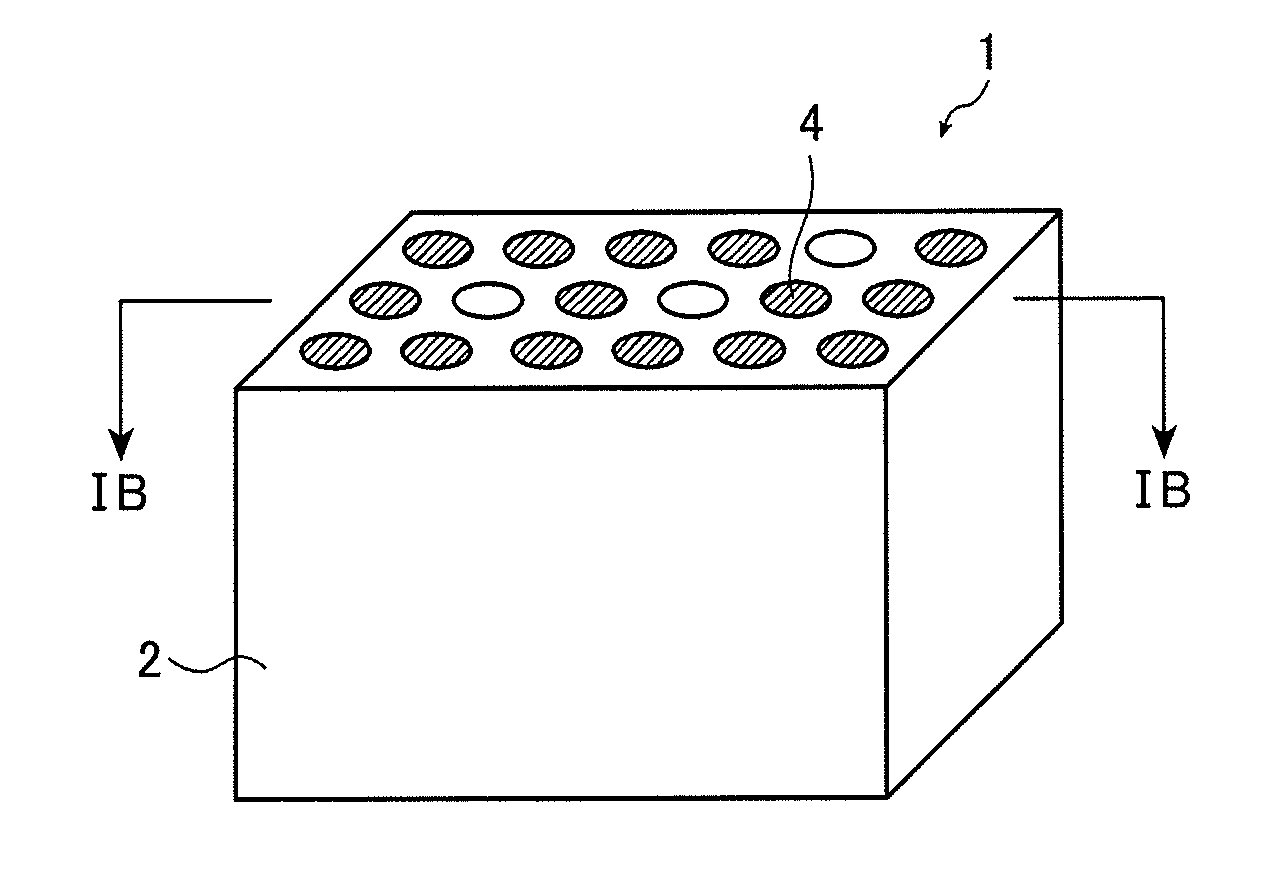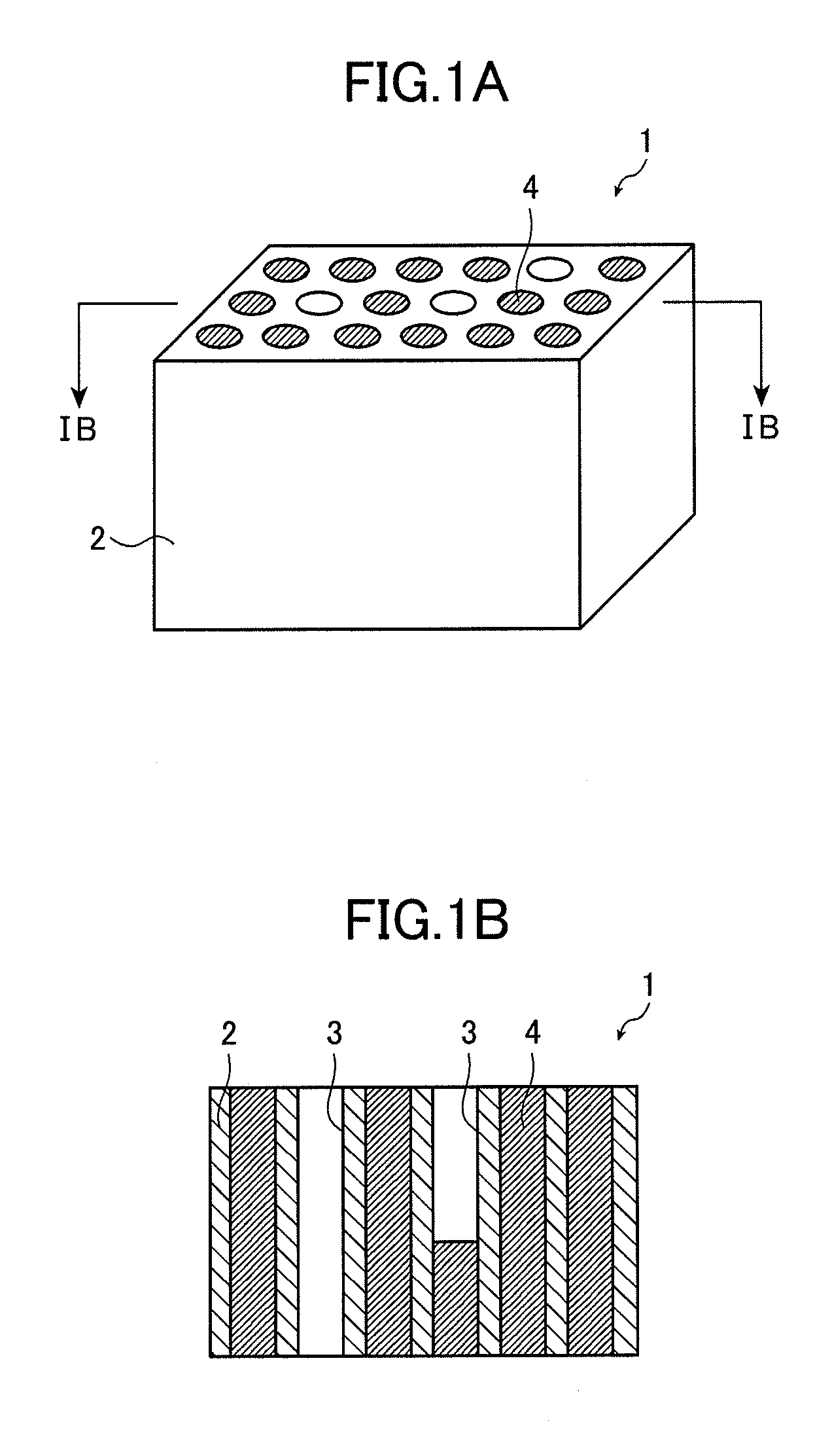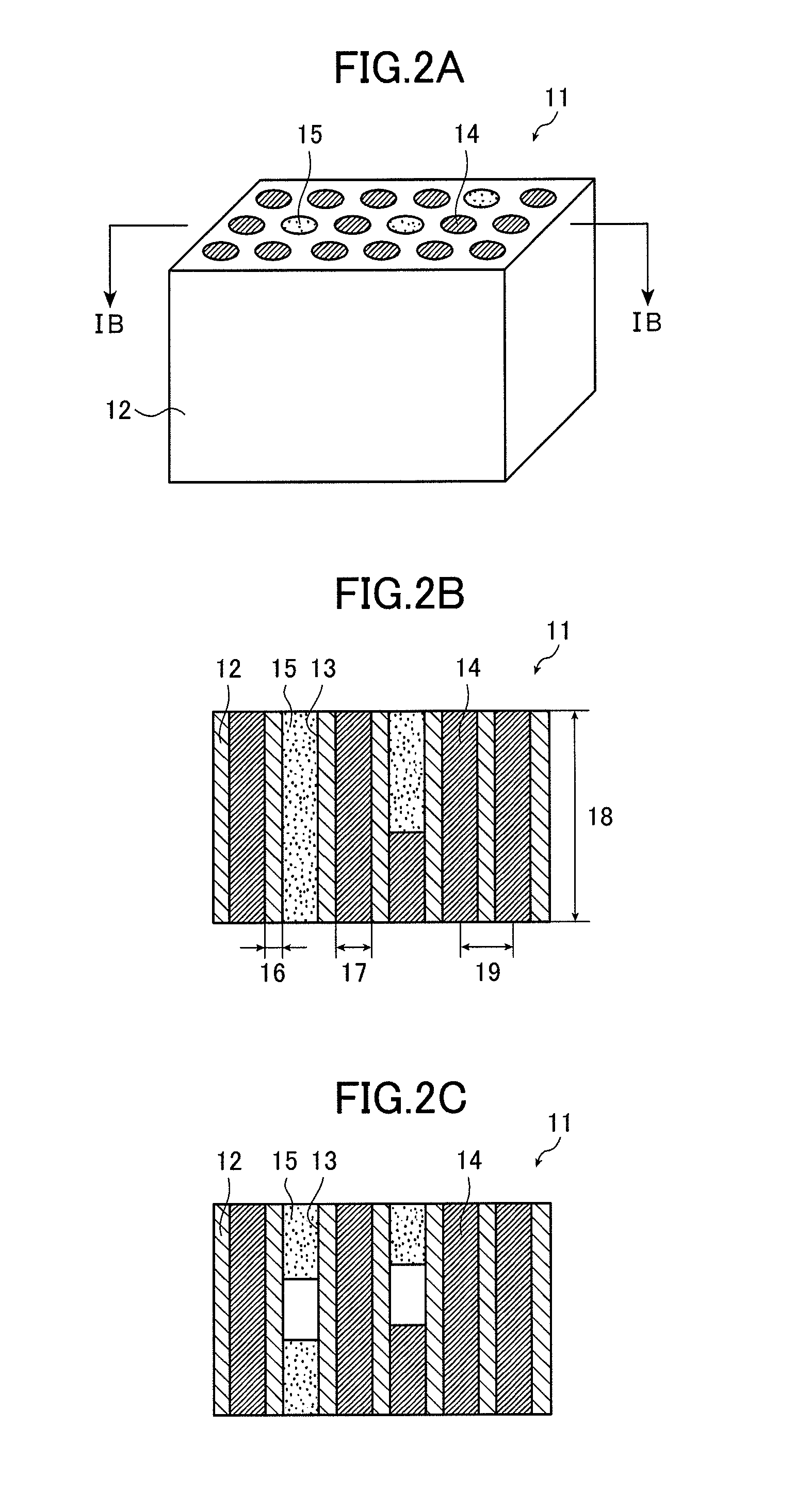Microstructure and microstructure production method
- Summary
- Abstract
- Description
- Claims
- Application Information
AI Technical Summary
Benefits of technology
Problems solved by technology
Method used
Image
Examples
examples
[0109]The present invention is described below more specifically by way of examples. The present invention should not be construed as being limited to the following examples.
examples 1 to 8
(A) Mirror Finish Treatment (Electrolytic Polishing)
[0110]A high-purity aluminum substrate (purity 99.99 mass %, thickness 0.4 mm, produced by Sumitomo Light Metal Industries, Ltd.) was cut to an area of 10 cm×10 cm for anodization and allowed to undergo an elctrolytic polishing treatment with a voltage of 25 V at a liquid temperature of 65° C. and at a liquid flow rate of 3.0 m / min using an electrolytic polishing solution having the following composition.
[0111]A carbon electrode was used as cathode, and a GP0110-30R unit (Takasago, Ltd.) was used as power supply. In addition, the flow rate of the electrolytic solution was measured using the FLM22-10PCW vortex flow monitor manufactured by As One Corporation.
(Electrolytic Polishing Solution Composition)
[0112]
85 mass % Phosphoric acid (Wako Pure Chemical660mLIndustries, Ltd.)Pure water160mLSulfuric acid150mLEthylene glycol30mL
(B) Anodizing Treatment
[0113]After electrolytic polishing, the aluminum substrate was subjected to self-orderi...
PUM
| Property | Measurement | Unit |
|---|---|---|
| Length | aaaaa | aaaaa |
| Length | aaaaa | aaaaa |
| Fraction | aaaaa | aaaaa |
Abstract
Description
Claims
Application Information
 Login to View More
Login to View More - R&D
- Intellectual Property
- Life Sciences
- Materials
- Tech Scout
- Unparalleled Data Quality
- Higher Quality Content
- 60% Fewer Hallucinations
Browse by: Latest US Patents, China's latest patents, Technical Efficacy Thesaurus, Application Domain, Technology Topic, Popular Technical Reports.
© 2025 PatSnap. All rights reserved.Legal|Privacy policy|Modern Slavery Act Transparency Statement|Sitemap|About US| Contact US: help@patsnap.com



